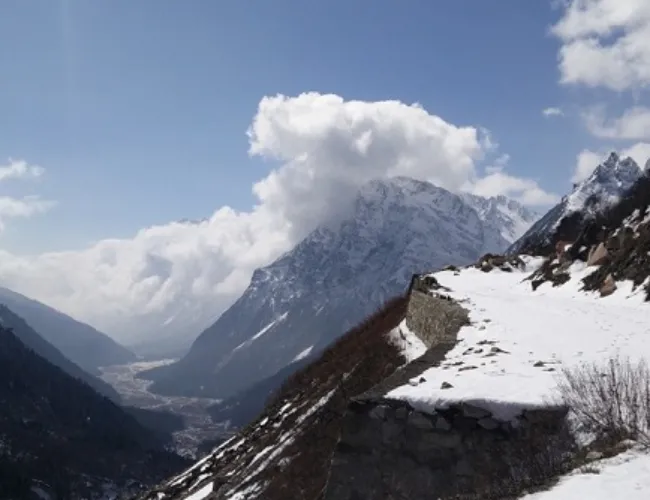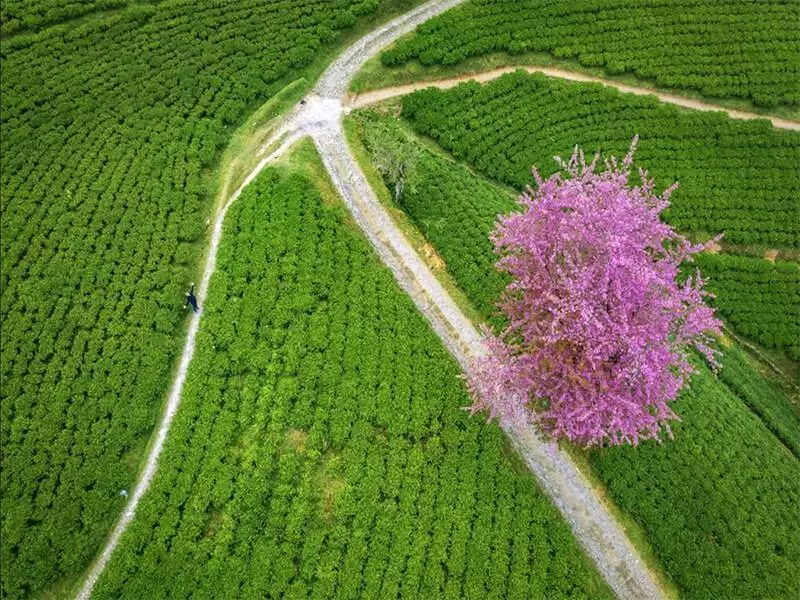Namdapha National Park (NP) is the largest protected area in the Eastern Himalayas covering 1985 sq km and is located in Arunachal Pradesh in Northeast India. It is a National Park and Tiger Reserve, a true wilderness and enchanting beauty of lush green vegetation, impenetrable pristine and virgin forests having diverse flora and fauna lies in the international border between India and Myanmar (Burma) within Changlang District in the state of Arunachal Pradesh in the North-east India. Namdapha National Park is located at a few kilometre away from Miao amidst misty blue hills along the turbulent Noa-Dihing river lies in the sprawling tropical rain forest. It was declared as Tiger Reserve by the Government in 1983.
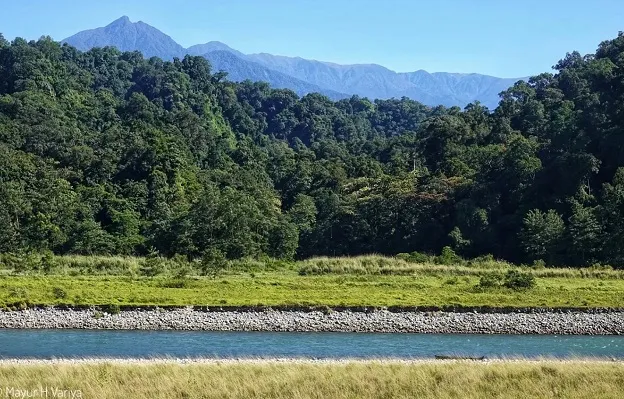
Why you should visit Namdapha National Park:
The park harbours the northernmost lowland evergreen rainforests in the world at 27°N latitude and is also known for it’s extensive Dipterocarp forests. It is every nature lovers most treasured destination with not a soul in sight for days. Due to the presence of such a wide variety of habitats, this region is one of the most bio-diverse hotspots in the country.
Unique Wildlife: The list of mammals found here is a long one, however due to the dense nature of the forests it is often difficult to spot them, especially cat species. However, a whopping 9 species of wild cats are found here from tigers, leopards, clouded leopard, snow leopards (higher reaches), marbled cat, golden cat, fishing cat, leopard cat and jungle cat. It is the only park in the World to have the four Feline species of big cat namely the Tiger (Panthera Tigris), Leopard (Panthera Pardus), Snow Leopard (Panthera Uncia) and Clouded Leopard (Neofelis Nebulosa).
A number of other primate species are seen in the park including Hoolock gibbons, wild dogs, Himalayan black bears, Asiatic elephants, gaur, sambar, barking deer, serow, takin are other big mammals found here. Certain extremely rare small mammals such as the Binturong, slow loris, crab eating mongoose, large Indian civet, parti-coloured flying squirrel and Chinese pangolin are also found here.
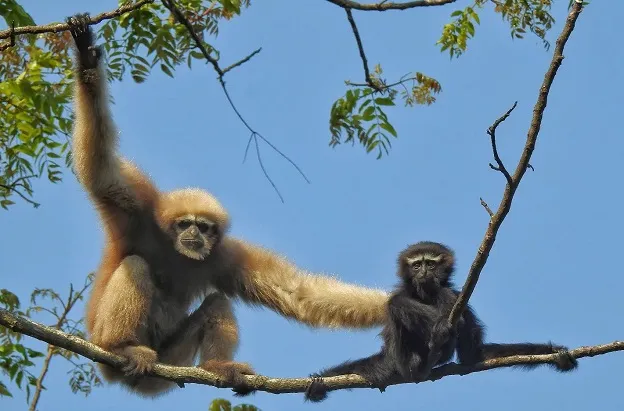
Birding Paradise: Immensely popular amongst birders, with over 350+ bird species recorded. It is home to 5 different hornbills, an unforgettable sight when seen (and heard) flying in large flocks. Laughingthrushes, parrotbills, fulvettas, tesias, spiderhunters, sunbirds, the list is long and incredible. Snowy throated babbler, snowy browed flycatcher, daurian redstart, white tailed flycatcher are some of the rare targets of this area. The critically endangered white bellied heron has also been seen on theNoa-Dehing river from the Deban forest rest house.
Pristine Landscapes: Nestled between the Patkai and Dapha Bum ranges, the park features dense tropical rainforests, alpine meadows, and rugged terrains. The Noa-Dihing River flowing through it adds to the scenic beauty, offering stunning views for trekkers and photographers.
Adventure and Trekking: Namdapha offers thrilling trekking routes like the 46-km Deban to Miao trail, which takes you through lush forests and tribal villages. Activities like jungle camping, river rafting, and elephant safaris provide immersive experiences in the wild.
Cultural Experience: The park is surrounded by indigenous tribes such as the Chakma, Lisu, and Tangsa, offering a chance to engage with their unique cultures, traditions, and lifestyles, adding a cultural dimension to your visit.
Butterfly Haven: Known as a butterfly paradise, Namdapha is home to rare species like the Kaiser-i-Hind, making it a must-visit for lepidopterists and nature lovers.
Other Useful Tips:
Best Time to visit Namdapha National Park: The best time to visit Namdapha National Park is from October to March, when the weather is pleasant and wildlife sightings are more likely.
Permits required: Indian nationals need an Inner Line Permit to visit Arunachal Pradesh (including Namdapha National Park), while foreign visitors require a Restricted Area Permit due to the park’s proximity to the Myanmar border.
How to reach Namdapha National Park: The nearest airport is in Dibrugarh (160 km away), and the nearest railway station is in Tinsukia. The park’s entry point is at Miao. A further one-hour drive through an enchanting 26 km stretch of forest road interspread by several streams, runoffs, falls, narrow gorges brings a new destination – Deban, a tiny hamlet nestled between the gentle folds of the Patkai range of hills of the great Himalays. It is advisable to have own transport, as taxies from Miao to Deban could prove very expensive
Some of the location of interests in park that have been identified are:
Deban: A beautiful forest camp on the bank of the river Noa-Dihing. It is located within the boundary of Namdapha National Park. One can enjoy the scenic beauty of overlooking Noa-Dihing river. The Forest Inspection Bungalow located at Deban itself surrounded by evergreen forest over looking the river Noa-Dihing is worth-staying. It is also ideal for trekking, hiking and angling on the river Noa-Dihing.
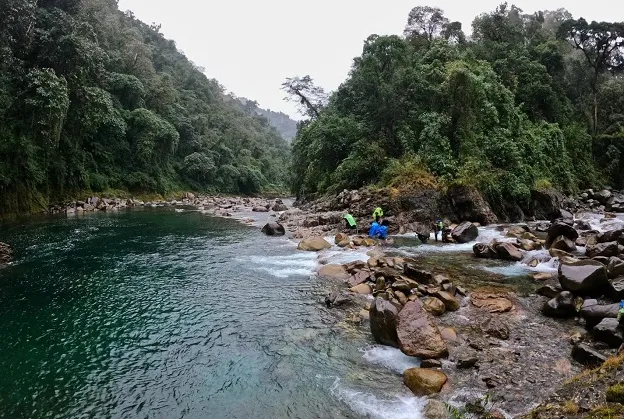
Firmbase: Located on the Noa-Dehing River bank 25 Km from the Deban Forest lodge. This is a popular camping site full of nature’s splendours. The track leading to the idyllic spot is enveloped by luxuriant forest and it is not un common to come across birds and wild animals on the way. For camping at Firm base, equipment and guide provided by the forest department is an unique experience.
Hornbill: Just 9 Km from Deban, this is as the name suggests is a homing ground for hornbills. Here flocks of these birds can be frequently spotted flying from one grove to another.
Haldibari: This pictureque camping spot, just 5 Km away from Deban, lies across the Noa-Dehing river can be reached by boat. An overnight stay here is enjoyable experience in jungle camping.
Bulbulia: This is an enchanting camping site overlooking a large aquifer and derives its name from its several natural springs. You need to be extremely lucky for an opportunity to stay here overnight and exprience close encounters with wild animals frequenting the water holes in the dark.
Camera Point: This camping site, as the name suggests offers a vantage point for a breath-taking view of Namdapha and its lush green landscape.
Moti Jheel: There are a pair of large forest-encased aquifers in this spot providing grazing pasture for a number of herbivorous. The 5 Km track from Gibbons land to this enchanting site is a veritable feast for bird watchers.
Gandhigram: It is situated in the southeast periphery of Namdapha. This is the remotest and the last village in India wedged China and Myanmar and is the home land of Lisu (Yobin) tribe. The village is at a distance of about 120 Km from Deban. A weeklong trek through lush jungles is more enjoyable for those having a craving for adventure.
In Conclusion:
Namdapha’s untouched beauty, rich biodiversity, and adventurous offerings make it a bucket-list destination for anyone seeking a unique and immersive experience in India’s wild heart.
Written by Karma Thutop Chechutharpa: Bridging Cultures Through Travel
Karma, a seasoned traveler with a deep love for Sikkim's rural charm, returned home in 2017. Co-founding OurGuest, he leverages his experiences across India, Nepal, and Bhutan to curate authentic travel journeys. Beyond adventure, Karma champions rural tourism. Through OurGuest's stories, he empowers local homestays and fulfills his childhood dream of becoming a writer, all while sharing the magic of Northeast India.
For a customized Namdapha National Park Tour


